Table Of Contents
- Introduction
- What is Terahertz?
- What are Terahertz Waves?
- Sources of Terahertz Radiation
- Terahertz Non-destructive Evaluation
- Terahertz Density Thickness Imager
- Types of Terahertz Systems
- What properties do Terahertz Waves have?
- The Future of Terahertz Technology
- Applications of Terahertz Waves
- International Standards for Terahertz Spectroscopy
- Conclusion
- Key Takeaways
Introduction
There exists a gap in the electromagnetic spectrum that engineers are not able to penetrate.
The electromagnetic spectrum includes everything from radio waves and microwaves to visible light X-rays and gamma rays.
And practically all of them have been mastered by humans in terms of sending and receiving.
However, there is one exception. There is a dead zone between visible light beams and radio static blips where our technique is ineffective. It's known as the terahertz gap.
For decades, no one has succeeded in creating a consumer device capable of transmitting terahertz radiation.
Qing Hu, an electrical engineer from MIT says that there are endless array of potential applications for these waves. And, some researchers are gradually advancing.
If they succeed, they might unleash a whole new set of technologies, such as Wi-Fi replacement or a more sophisticated skin cancer detection system.
This article explores the mysteries of terahertz radiation, current advancements, and its applications in Non-destructive Testing.
What is Terahertz?
Terahertz is a unit of frequency. Hertz means one event per second. Hence terahertz means one trillion (1012) cycles per second or 1012 hertz.
To put it in physical terms, the silicon chips in our electronics must pulse quickly—at trillions of cycles per second (thus a terahertz) in order to attain the terahertz frequency.
The semiconductors in a phone or computer can run at millions or billions of cycles per second without any issues, but it becomes a struggle to reach trillions.
What are Terahertz Waves?

Terahertz Radiation, also known as submillimeter radiation, terahertz waves, tremendously high frequency (THF), T-rays, T-waves, T-light, T-lux, or THz, is made up of electromagnetic waves with frequencies ranging from 0.3 to 3 terahertz (THz).
The upper boundary is somewhat arbitrary and is considered by some sources to be 30 THz.
One terahertz is equal to 1012 hertz or 1000 gigahertz.
The wavelengths of radiation in the terahertz region span from 1 mm to 0.1 mm.
Terahertz radiation range is frequently referred to as the submillimeter band, and its radiation is submillimeter waves because it begins at a wavelength of roughly 1 millimeter and progresses to shorter wavelengths.
This Electromagnetic Radiation band falls in between microwave and far infrared.
Terahertz radiation is strongly absorbed by the gases of the atmosphere at some frequencies.
In the air, it is attenuated to zero within a few meters, making such frequencies unsuitable for terrestrial radio transmission.
However, depending on the conditions of the atmosphere there are frequency windows in the Earth's atmosphere where terahertz radiation can travel up to 1 km or even further.
The 0.3 THz band, which will be used for 6G communications, can pass through small layers of materials but is stopped by larger items.
THz beams transmitted through materials can be used for material characterization, layer inspection, relief measurement, and as a lower-energy alternative to X-rays for obtaining high-resolution photographs of solid objects' interiors. This property makes it a promising tool for NDT Inspections.
Terahertz Radiation exists in a middle ground where the ranges of microwaves and infrared light waves overlap, known as the "terahertz gap".
The terahertz gap is a frequency band in the THz area for which practical radiation generation and detection technologies do not exist.
It is described as 0.1 to 10 THz (wavelengths of 3 mm to 30 m), while some sources believe the upper boundary to be 30 THz (a wavelength of 10 m).
Currently, suitable power generating and reception NDT Technologies are inefficient and impracticable at frequencies in this range.
This range is called a "gap" because the technology for producing and manipulating it is still in its early stages.
The current electrical devices used to generate radio waves and microwaves are no longer capable of generating and modulating electromagnetic waves in this frequency range, which necessitates the development of new devices and techniques for its transmission and generation.
The mass fabrication of devices in this range, as well as their functioning at room temperature (where energy kT equals the energy of a photon with a frequency of 6.2 THz), are both impracticable.
This creates a rift between advanced microwave technology in the radio spectrum's highest frequencies and the well-developed optical engineering of infrared detectors in their lowest frequencies.
This type of radiation is typically employed in small-scale, specialized applications like submillimetre astronomy.
Since the late twentieth century, researchers have been attempting to overcome this problem.
Sources of Terahertz Radiation
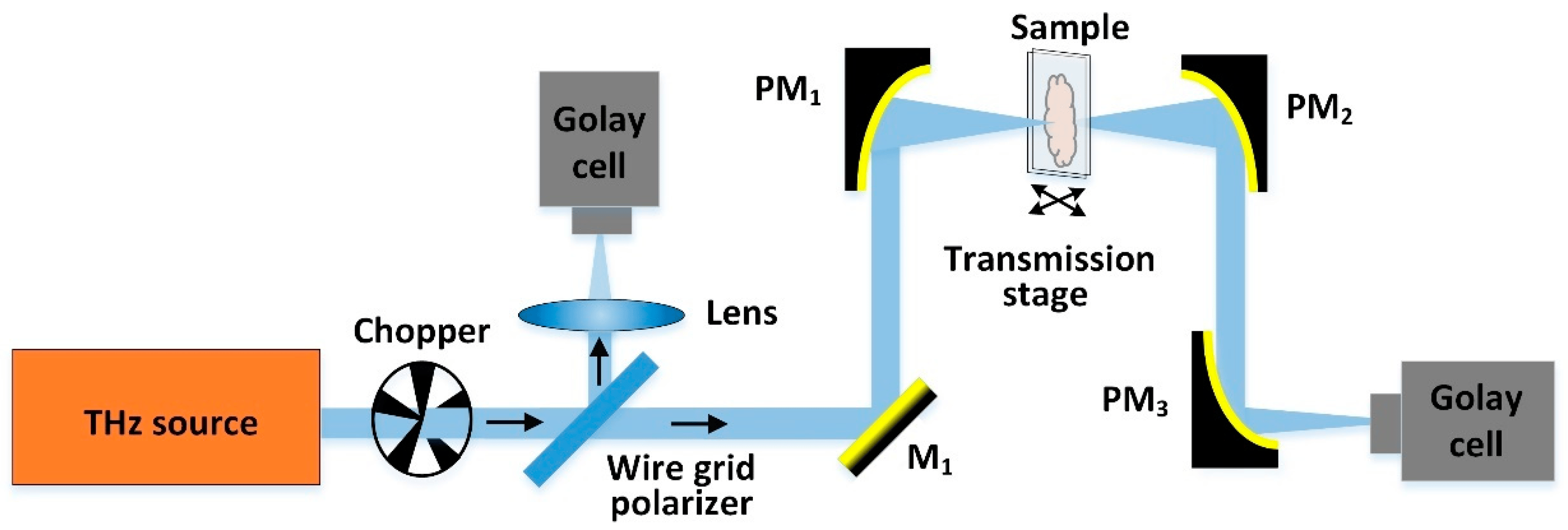
There are both natural as well as artificial sources of Terahertz radiation.
Here’s a glimpse into both types.
- Natural Sources
Terahertz radiation is emitted by anything with a temperature greater than around 2 Kelvins as part of the black-body radiation.
While the Thermal Emission is very faint, studies at these frequencies are critical for identifying cold (10-20 K) cosmic dust in interstellar clouds in the Milky Way galaxy and distant starburst galaxies.
The following observatories and telescopes are operating in this band:
- James Maxwell Telescope
- Caltech Submillimeter Observatory
- Submillimeter Array at Hawaii's Mauna Kea Observatory
- BLAST balloon-borne telescope
- Herschel Space Observatory
- Heinrich Hertz Submillimeter Telescope at Arizona's Mount Graham International Observatory
- Artificial Sources
In mid-2007, scientists at the US Department of Energy's Argonne National Laboratory reported the development of a small gadget that could lead to portable, battery-powered terahertz radiation sources.
The system makes use of high-temperature superconducting crystals developed at Japan's University of Tsukuba.
These crystals are made up of stacks of Josephson junctions, exhibiting the Josephson effect, which states that when an external voltage is applied, alternating current flows across the junctions at a frequency proportionate to the voltage.
An electromagnetic field is created by the alternating current.
A little voltage (about two millivolts per junction) can create terahertz frequencies.
Terahertz Non-destructive Evaluation
Terahertz imaging is a new and important Non-destructive Evaluation (NDE) Technology utilized in the materials characterization, and aerospace industries for dielectric (nonconducting, i.e., an insulator) materials examination and quality control.
It has been useful in inspecting paint layers and coatings, detecting structural faults in ceramic and composite materials, and imaging the physical structure of artworks and manuscripts.
THz waves can be used to analyze multi-layered structures and discover irregularities such as foreign material inclusions, disband and delamination, mechanical impact damage, heat damage, and water or hydraulic fluid ingression.
This new NDT Method can play a significant role in materials characterization applications requiring precision Thickness Mapping (to ensure product dimensional tolerances within and between products) and density mapping (to ensure product quality within and between products).
- Terahertz Density Thickness Imager
The Terahertz Density Thickness Imager is a Non-destructive Inspection Method that maps density and thickness in dielectric, ceramic, and composite materials using terahertz energy.
This non-contact, single-sided terahertz Electromagnetic Measurement and imaging approach evaluates dielectric (insulating) material microstructure and thickness variation.
This method has been demonstrated for the Space Shuttle external tank sprayed-on foam insulation, and it was designed to be used as an Inspection Method for current and future NASA thermal protection systems, as well as other dielectric material inspection applications where no contact with the sample is possible due to fragility, and ultrasonic methods are impractical.
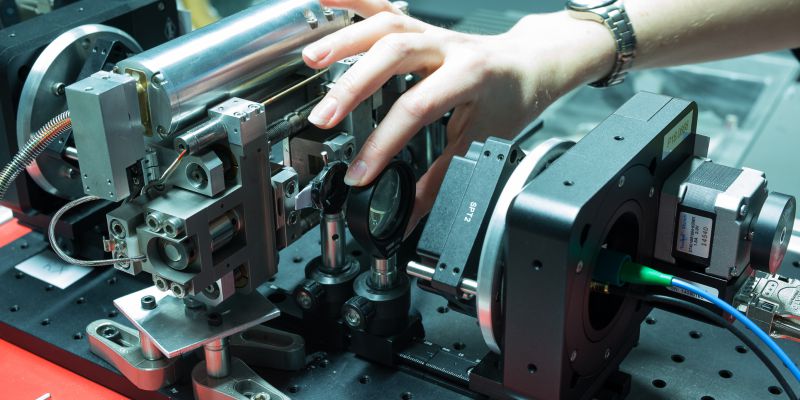
- Rotational Spectroscopy
Electromagnetic radiation in the frequency range of 0.1 to 4 terahertz (THz) is used in rotational Spectroscopy.
This wavelength range encompasses millimeter wavelengths and is especially sensitive to chemical compounds.
THz absorption provides a distinct and repeatable spectral signature that distinguishes the substance.
THz Spectroscopy can detect minuscule levels of explosives in less than a second.
Since explosives constantly produce trace amounts of vapor, these approaches should be able to identify concealed explosives from a distance.
- THz-wave Radar
THz-wave radar is capable of detecting gas leaks, chemicals, and radioactive materials.
THz-wave radar detected compounds at 10-ppm levels from 60 meters away in field experiments.
This approach can be utilized in a fence line or an aircraft-mounted system that operates day or night and in all weather conditions.
It is capable of detecting and tracking chemical and radioactive plumes.
Based on radiation-induced ionization effects in air, THz-wave radar that can detect radioactive plumes from nuclear facilities discovered plumes many kilometers away.
- THz tomography
THz tomography techniques are Non-destructive Testing ways of locating things in 3D that use THz pulsed beam or millimeter-range sources.
Tomography, tomosynthesis, synthetic aperture radar, and time of flight are examples of these approaches.
Such approaches can detect details on sizes of less than one millimeter in objects several tens of centimeters in size.
What were the beginnings of Terahertz waves?
Terahertz Technology has been known since the early twentieth century, but its practical application was not conceivable until three decades ago due to a lack of material means for the proper generation and detection of these waves.
Terahertz Radiation was infrequently employed in science and technology for a long time, owing to a lack of good terahertz sources and compatible detectors; this spectral range was sometimes referred to as the terahertz gap.
Their use steadily increased until the 1990s, when terahertz waves became increasingly popular, and many researchers became active in this field.
The field's quick progress is partly owing to breakthroughs in photonics, which held many solutions for both the generation and detection of terahertz waves, as well as for modifying terahertz signals.
These advancements have increased the impetus for new efforts in numerous areas of terahertz technology, and the fast-expanding technology possibilities open up a wide range of applications.
How does Terahertz Spectroscopy work?
Terahertz spectroscopy detects and regulates material properties using electromagnetic fields with frequencies ranging from a few hundred gigahertz to several terahertz (abbreviated as THz).
Several significant states in many-body systems have an energy difference that matches the energy of a THz photon.
As a result, THz spectroscopy is a particularly effective tool for resolving and regulating individual transitions between various many-body states.
This provides new insights into many-body quantum dynamics and how it can be used to produce new technologies that are optimized down to the elementary quantum level.
Electronic excitations in semiconductors are already widely used in lasers, electronic components, and computers.
At the same time, they form an intriguing many-body system whose quantum features can be altered by nanostructure design.
As a result, THz spectroscopy on semiconductors is important for revealing both new technological potentials of nanostructures and for probing the fundamental features of many-body systems in a controlled manner.
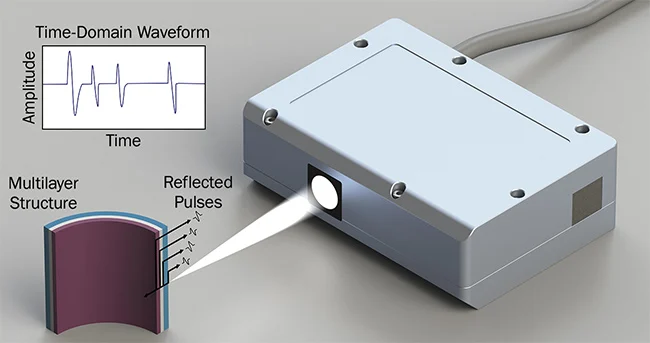
Mechanism of Terahertz Spectroscopy
1. Generation of THz Waves
THz waves can be generated through various methods:
- Photoconductive Switching:
A short laser pulse is used to illuminate a semiconductor. This generates a current that oscillates at THz frequencies.
- Optical Rectification:
This is an elegant method of producing terahertz (THz) pulses by irradiating a dielectric nonlinear crystal with femtosecond laser pulses.
Broadband THz pulses can be generated due to the almost immediate polarization of the crystal atoms or molecules.
- THz Quantum Cascade Lasers (QCLs):
These are specially designed semiconductor lasers that emit THz radiation when an electric current passes through them.
2. Detection of THz Waves
THz waves can be detected using techniques like:
- Electro-Optic Detection:
This method uses the Pockels effect, where an incoming THz wave modulates the polarization of an optical probe beam, which can then be detected by a photodetector.
- Bolometers and Microbolometers:
These are sensitive detectors that measure the change in resistance or temperature induced by THz radiation.
Terahertz spectroscopy is a versatile and non-invasive technique that has found applications in various fields, from scientific research to industry and healthcare.
It continues to be an area of active research and innovation.
3. Parameters that can be determined with terahertz spectroscopy
Terahertz spectroscopy helps in the analysis of parameters such as:
- Electrical conductivity
- Electrical resistivity
- Charge carrier mobility
- Charge carrier density
- Refractive index
- Layer thickness
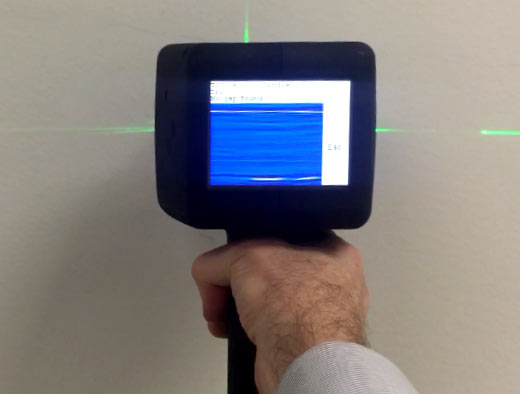
Types of Terahertz Systems
Terahertz systems are classified into two types:
1. Passive Systems
- Passive systems are made up entirely of THz receivers, with the emitter being the element or sample to be studied.
- They are small and inexpensive, but they lack toughness and reliability.
2. Active Systems
- In the case of active systems, an external THz source is required to illuminate the element or sample to be inspected, and a receiver is required to detect the THz waves after interaction with the sample.
- The interaction of the element or sample with the THz waves modifies the waves, which are then used to extract information from the sample.
- Logically, these systems will be more resilient and reliable than passive systems, but at a higher cost and size.
- One of the most mature technologies for implementing these active systems is the use of photoconductive antennas (PC Antenna) as generators and receivers.
- A laser pulse of very short duration (femtoseconds) is impinged on the polarised antenna with a constant voltage in these devices, generating the THz pulse.
- Various antenna designs have arisen over the years, depending on the performance required in terms of working bandwidth and antenna radiation pattern.
- Various techniques have been devised to boost the power of the radiated pulse, such as the use of large-aperture emitters, also known as large-aperture photoconductive emitters.
What properties do Terahertz Waves have?
Terahertz waves have various characteristics as shown below that make them ideal for non-contact inspection applications.
- They provide great spatial resolution below the millimeter, all the way up to the micron unit.
- They can penetrate most dielectric materials with a penetration of a few centimeters.
- They can "see" beneath the surface layers of materials like plastics, medicines, paper, cardboard, ceramics, wood, insulators, composites, textiles, paints, and so on.
- This enables the detection of objects, air bubbles, and concealed substances through various materials, as well as the determination of their thicknesses or internal faults.
- Aside from thin films and bulk materials, they can collect information on the electrical characteristics of 2D materials such as graphene.
- They are low-energy, non-ionizing waves, and hence safe for people.
- This method is non-contact and Non-destructive Testing. Measurements are rapid (less than 1 second) and accurate (up to 1 micron), allowing information from all layers of multilayer systems to be obtained simultaneously.
The Future of Terahertz Technology
For the time being, the two realms attempting to approach the terahertz black zone from opposite ends remain largely disconnected.
Nonetheless, they are providing the scientific community with new capabilities in a large number of areas.
Some of these abilities may help to accelerate communication.
Wi-Fi is powered by microwaves: Terahertz, which has higher frequencies than microwaves, might create a speedier connection by orders of magnitude.
It could also provide a lightning-fast link between USB and fiber optics via a wire.
Terahertz waves are also excellent for drug detection.
Almost all the molecule has its unique 'fingerprint' spectrum in the range of terahertz frequency.
Terahertz vibrations are therefore ideal for detecting substances such as explosives and the compounds in medicines.
Astronomers already make use of this capability to examine the chemical compositions of cosmic dust and astronomical objects.
Because of the terahertz fingerprints, far infrared is suitable for scanning persons and objects.
Terahertz waves can see through things that light cannot, such as clothing, while avoiding potentially hazardous ionizing radiation such as X-rays.
Security screeners have already expressed interest in the technology.
Terahertz waves lack one scanning characteristic: they cannot pass through water—both in the air and in the human body.
But that does not impede medicine. A terahertz gadget may be used by a doctor to detect subtle signals of skin cancer that X-rays could miss, or by a neuroscientist to examine a mouse brain.
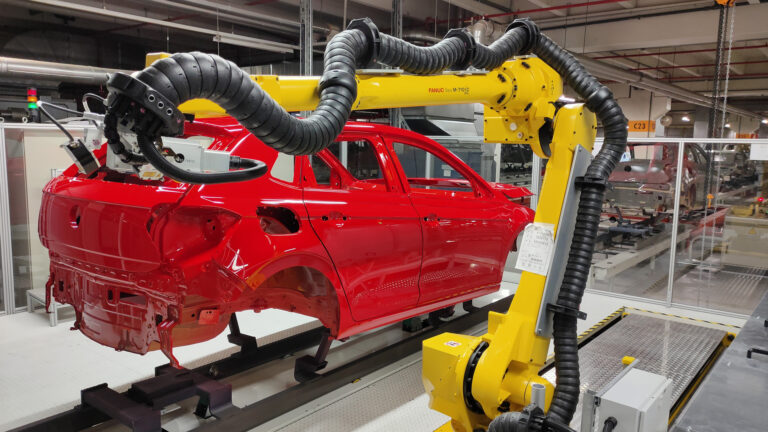
Applications of Terahertz Waves
- Aerospace
NASA Space Shuttle inspections are the most noteworthy example of the application of terahertz waves.
Post the Space Shuttle Columbia accident in 2003, Columbia Accident Investigation Board recommendation R3.2.1 stated that “Initiate an aggressive program to eliminate all External Tank Thermal Protection System debris-shedding at the source….” In tune with this recommendation, various inspection methods for defects in foam were being evaluated, and developed, at NASA.
STS-114 was the first "Return to Flight" Space Shuttle mission after the Columbia disaster.
During the STS-114 flight, there was significant foam shedding.
Therefore, it was an absolute necessity for Non-destructive Testing to detect and characterize the crushed foam after that flight.
Also, there was a belief that the staff had crushed foam by walking over it. Or else it was from hail damage on the launch pad or during other launch preparations.
Also, density variations in the foam were also possible reasons for flaw initiation causing foam shedding.
The innovation outlined below was created in response to the need for Non-destructive Testing, completely non-contact, non-liquid-coupled technology that could precisely characterize thickness variation (caused by crushed foam from worker handling and hail damage) and density variation in foam materials.
A technique that did not require fluid (water) coupling was essential. (Ultrasonic Testing Methods require water coupling).
Terahertz's Non-destructive Evaluation will be able to replace ultrasonic instruments for structural plastic, ceramic, and foam materials once it has reached full commercialization and taken on a more portable form.
The new instruments' increased field applicability and potential for high-temperature in-situ applications where liquid coupling is impractical are benefits of not requiring liquid coupling.
With this technology, a potential new market segment can be created.
- Manufacturing
Terahertz sensing and imaging have several potential applications in manufacturing, quality control, and process monitoring.
These, in general, take advantage of the fact that plastics and cardboard are transparent to Terahertz Radiation, allowing for the inspection of packaged goods.
AT&T Bell Laboratories engineers developed the first imaging device based on optoelectronic Terahertz Time-domain Spectroscopy in 1995, which was used to produce a transmission image of a packed electronic chip.
This technology made use of pulsed laser beams with durations in the picosecond range.
Since then, commonly used commercial/research terahertz imaging systems have generated terahertz images using pulsed lasers.
The image can be created using either the attenuation or the phase delay of the transmitted terahertz pulse.
Because the beam scatters more at the edges and different materials have varying absorption coefficients, attenuation images indicate edges and different materials inside of things.
This method is analogous to X-ray transmission imaging, in which images are created by attenuating the transmitted beam.
- Medical
Terahertz radiation, unlike X-rays, is non-ionizing radiation, and its low photon energy in general does not harm biological tissues or DNA.
Terahertz Radiation at certain frequencies can penetrate several millimeters of tissue with low water content (e.g., fatty tissue) and reflect back.
Terahertz radiation can also detect changes in tissue water content and density.
Such technologies could allow for the successful detection of epithelial cancer using non-invasive, painless imaging technology.
Terahertz spectroscopy and imaging have been offered as quick screening technology in response to the demand for COVID-19 screening.
The earliest photographs generated with terahertz radiation were created in the 1960s; however, images created with terahertz time-domain spectroscopy sparked widespread interest around 1995.
Some terahertz radiation frequencies can be used for 3D imaging of teeth and may be more accurate than traditional X-ray imaging in dentistry.
- Scientific Use and Imaging
Terahertz radiation spectroscopy, in addition to its current usage in submillimetre astronomy, could give new sources of information for chemistry and biochemistry.
THz time-domain spectroscopy (THz TDS) and THz tomography have recently been demonstrated to be capable of imaging samples that are opaque in the visible and near-infrared parts of the spectrum.
When the sample is very thin or has a low absorbance, the utility of THz-TDS is limited because it is difficult to separate changes in the THz pulse induced by the sample from those caused by long-term fluctuations in the driving laser source.
- Security
Since Terahertz Radiation can penetrate through clothes and plastics, it finds application in surveillance, like security screening, to detect concealed weapons remotely.
The fact that many materials have distinct spectral "fingerprints" in the terahertz range makes it relevant.
International Standards for Terahertz Spectroscopy
- IEC TS 62607-6-10:2021 – Part 6-10: Terahertz time-domain spectroscopy.
- DIN 50996:2020-05 - Non-destructive measurement of coating thickness – Terahertz measurement method (in German)
- VDI/VDE 5590 Blatt 1:2018-03 Terahertz systems
- VDI/VDE 5590 Blatt 2:2022-01 Terahertz systems – Time domain spectroscopy (TDS) systems
Conclusion
Terahertz radiation, occupying a unique niche in the Electromagnetic Testing spectrum, holds immense promise across a spectrum of applications.
Ranging from 0.3 to 30 terahertz, this domain offers a new perspective on materials and compounds, positioning itself between microwaves and far-infrared light.
However, harnessing this potential is no small feat, as current technology falls short, necessitating the development of novel devices and NDT Techniques.
Natural and artificial sources contribute to the generation of Terahertz Radiation.
Its application in Non-destructive Evaluation (NDE) stands out as a transformative force.
Terahertz imaging is revolutionizing industries by offering meticulous examination and quality control of dielectric materials.
From inspecting paint layers to detecting structural faults, its applications are both wide-ranging and precise.
Moreover, terahertz spectroscopy plays a crucial role in identifying chemical compounds, presenting a powerful tool for security applications
Key Takeaways
- Terahertz Radiation has frequencies ranging from 0.3 to 30 terahertz.
- It occupies a unique position in the electromagnetic spectrum, bridging the gap between microwaves and far-infrared light.
- Terahertz waves have distinctive properties, including the ability to penetrate many materials and provide high-resolution imaging.
- Terahertz radiation is strongly absorbed by the gases of the atmosphere at some frequencies. In the air, it is attenuated to zero within a few meters.
- They are non-ionizing and safe for biological tissues, making them valuable in medical applications, such as cancer detection and imaging.
- Terahertz spectroscopy and imaging find applications in various fields, including Aerospace Industry, manufacturing, medicine, scientific research, and security.
- This technology is particularly adept at detecting concealed substances and materials with specific spectral signatures.
- International standards like IEC TS 62607-6-10 and DIN 50996, are establishing protocols for terahertz spectroscopy applications, ensuring accuracy in measurements.









